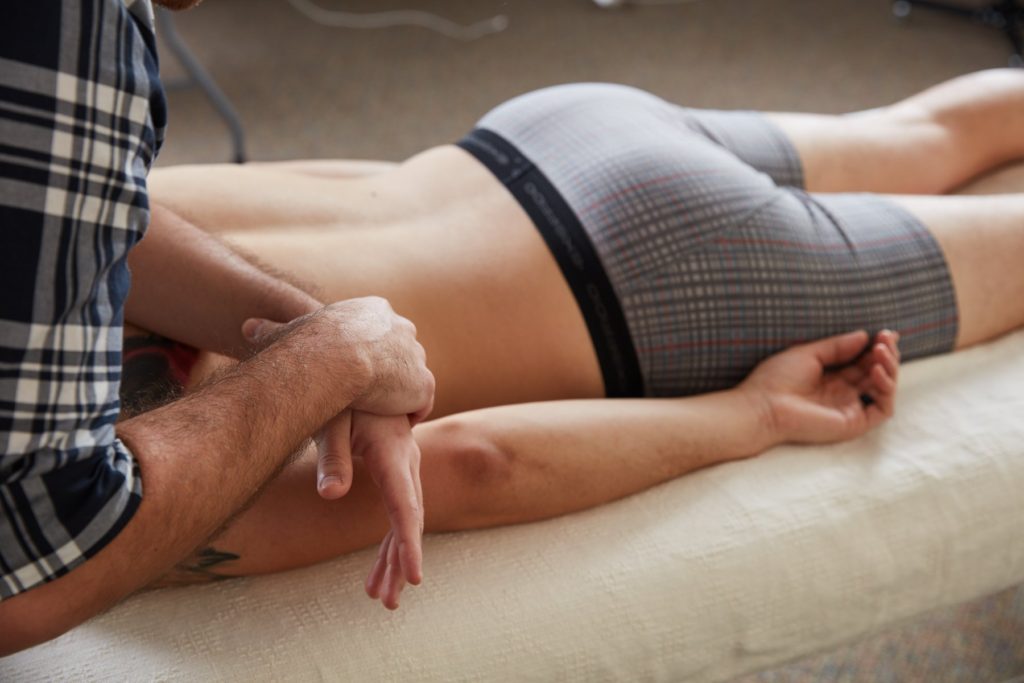Rolfing feels very deeply relaxing, as it releases and balances tension and compensations that have built up over a lifetime. In places, the sensation can be very intense. Intensity is fine as long as the client can relax with it. If at any point the pressure feels too much or too fast, there are always other ways to achieve the goals of the session. I ask clients to let me know immediately if their discomfort is beyond what they can relax with.

Here’s more from Dr. Ida Rolf Institute®:
You should not have to experience any pain, but there may be some discomfort. Communicate any discomfort to the Rolfer.
When some people think of Rolfing Structural Integration, one of the first words that come to their mind is pain. Often, this perception is based on anecdotal accounts of sessions performed during Rolfing SI’s infancy, when it tended to be a less subtle and more intense discipline, frequently linked to popular emotionally intense types of therapies in the late 1960s and early 70s. Part of this reputation can be attributed to an often-quoted complaint of Dr. Rolf during her training classes that her students failed to work deep enough. Apparently, many assumed that what she meant was that they needed to work harder and deeper. However, we now realize that deep work is not necessarily synonymous with physical intensity.
Several factors determine the level of comfort or discomfort during a Rolfing session. One is the degree of trauma in the system; another is how long fascial distortions have been in the client’s body. Long-term distortions create more tenacious and widespread compensatory patterns, which may require more sustained pressure to release.
Another factor is the degree of emotional charge associated with an area of injury or strain. Dr. Rolf made the point that during the therapeutic process, emotional pain is often experienced when deeply held emotional traumas and memories are brought to the surface and processed. Similarly, she reasoned, deep touch can result in a transitory experience of pain that is healing and transformative. However, there is actually a fair amount of variation in the level of intensity. Practitioners vary in the amount of pressure they feel is appropriate to affect the necessary level of change. It is recommended that the potential Rolfing client speak to several Rolfers about this issue, even experiencing the work of various practitioners, in order to evaluate both the level of intensity and the quality of the results you experienced.
A general guideline for the vast majority of Rolfing clients is that the intensity experienced is transitory, moving quickly from brief intensity to a decrease in sensation and finally to an easing of long-standing holdings which can prove both profound and transformative. To paraphrase Peter Schwind, a Certified Advanced Rolfer® from Munich, Germany, “The art of Rolfing [SI] is to master a wide range of styles of touch and know when a lighter [or] more intense touch is required.” Continuous communication with the client and pacing the level of intensity are essential, profoundly affecting the client’s reaction to the transitory discomfort when seriously restricted tissue is softened, differentiated and reintegrated.

